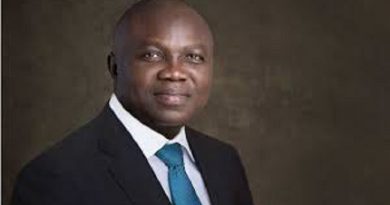Over 15% Of AIDS-Related Deaths In Children, Adolescents Occur In Nigeria – UNICEF Report
Over 15 per cent of AIDS-related deaths in children and adolescents globally occur in Nigeria, a report by the United Nations Children’s Fund (UNICEF) has shown.
According to the report released to mark the 2020 World AIDS Day, approximately every minute and 40 seconds, a child or young person under the age of 20 was newly infected with HIV in 2019.
These amounts to 2.8 million children living with HIV globally.
The report shows that in Nigeria alone, about 22,000 new infections occurred in children aged 0-14 years in 2019.
It noted that efforts and treatment for children remain some of the lowest amongst key affected populations.
“In 2019, a little more than half of the children worldwide had access to life-saving treatment, significantly lagging behind coverage for both mothers (85 per cent) and all adults living with HIV (62 per cent).
“Nearly 110,000 children died of AIDS that year. In Nigeria, 13,000 children aged 0-14 years died of AIDS-related causes in 2019.”
World AIDS Day is marked on December 1 annually to honour the many lives lost from the disease as well as the people living with HIV.
The day is also celebrated to raise awareness about the disease and the need to know one’s status through HIV testing.
The theme for the 2020 World AIDS Day is ‘Global solidarity, shared responsibility’. Nigeria, however, joins the commemoration with a localised theme ‘United to End AIDS in the midst of COVID-19’.
COVID-19 pandemic
The report warns that children are being left behind in the fight against HIV, adding that COVID-19 contributed to disruptions to HIV services delivery in one-third of high burden countries.
“The world is still struggling with the ongoing global COVID-19 pandemic, but there is now hope for a vaccine. But we must remember that there is no vaccine for HIV,” said Peter Hawkins, UNICEF Nigeria Representative.
He said hundreds of thousands of children continue to suffer the impact of the HIV epidemic.
“Children are still getting infected at alarming rates, and they are still dying from AIDS. Even with improvements in recent years, HIV treatment access for children and adolescents is unacceptably low, and much more needs to be done to ensure children get the treatment they need and deserve,” he said.
The COVID-19 pandemic has interrupted vital HIV treatment and prevention services globally, putting countless more lives at risk.
Almost 9 out of 10 children and adolescents of the estimated 2.8 million children aged 0–19 living with HIV are in sub-Saharan Africa, according to the report.
Leaving no one behind
Speaking at an event to mark World AIDS Day, Secretary to the Government of the Federation, Boss Mustapha, said the government is committed to ensuring no one is left behind in the fight against the AIDS epidemic.
He said Nigeria as a country aligns fully with the global solidarity and shared responsibility, which requires the country to view global health responses, including the AIDS response, in a new way.
In his remarks, the World Health Organisation (WHO) Country Representative, Walter Mulombo, said the fight against AIDS is a responsibility shared by the government and the people.
“Today is very significant because it’s a reminder that the fight against AIDS is everybody’s business.
“The government of Nigeria has committed additional funding to allow 50,000 more people to access HIV treatment yearly.
“But the people need to come out to get tested to know their status so that they can access treatment,” he said.
Meeting 2030 AIDS target
The National Coordinator, Network of People Living with HIV/AIDS in Nigeria, Abdulkadir Ibrahim, said there is a need to close the access gap amongst people living with HIV if the world is to eradicate AIDS by 2030.
He said closing the gap means empowering and enabling people to access the services they need, and most importantly putting the patient community at the centre of HIV interventions.
“Ending AIDS epidemic by 2030 is possible, but only by closing the gap between people who have access to HIV prevention, treatment, care and support services and people who are being left behind,” he said.




